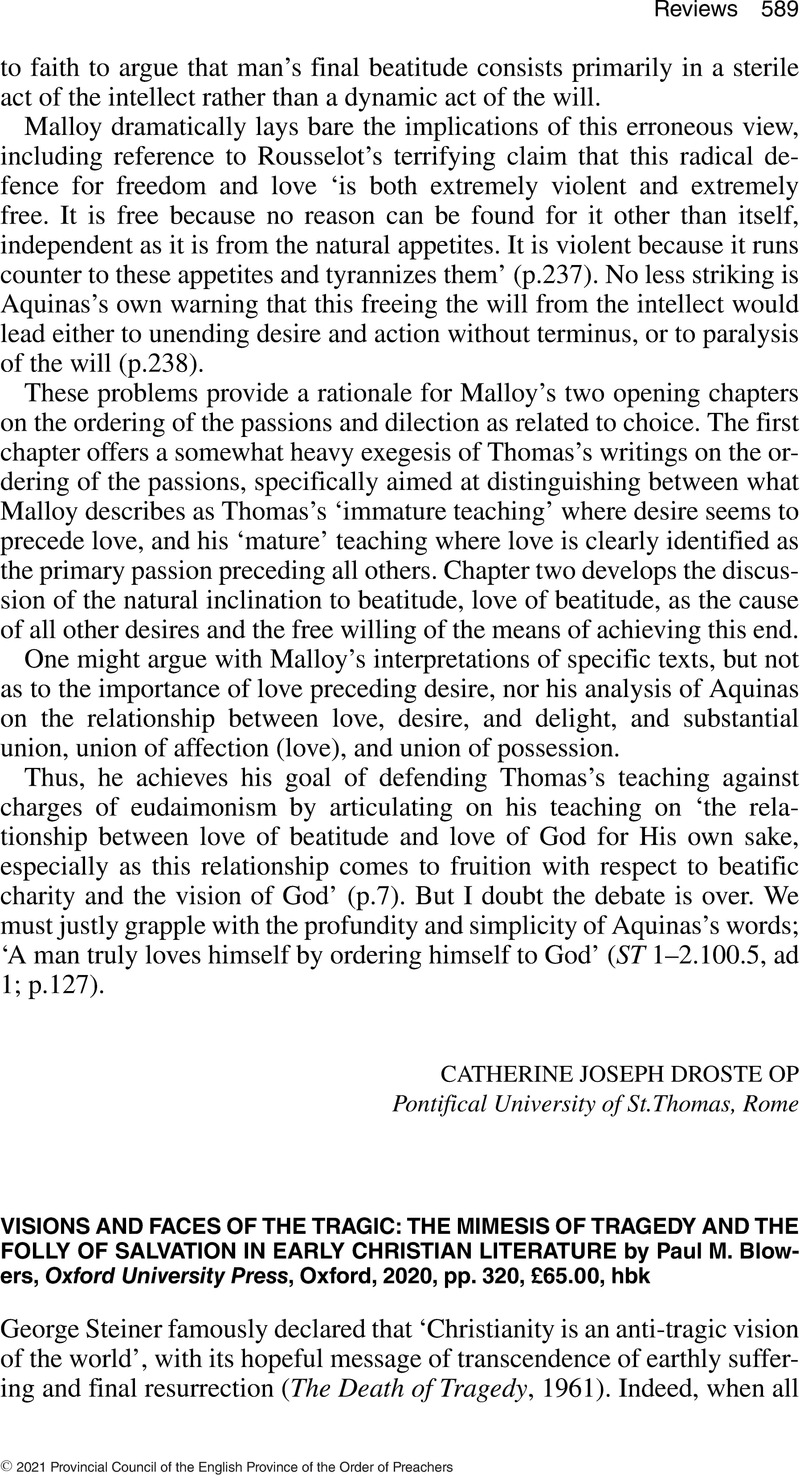No CrossRef data available.
Article contents
Visions and Faces of the Tragic: The Mimesis of Tragedy and the Folly of Salvation in Early Christian Literature by Paul M. Blowers, Oxford University Press, Oxford, 2020, pp. 320, £65.00, hbk
Review products
Visions and Faces of the Tragic: The Mimesis of Tragedy and the Folly of Salvation in Early Christian Literature by Paul M. Blowers, Oxford University Press, Oxford, 2020, pp. 320, £65.00, hbk
Published online by Cambridge University Press: 01 January 2024
Abstract
An abstract is not available for this content so a preview has been provided. Please use the Get access link above for information on how to access this content.

Information
- Type
- Reviews
- Information
- Copyright
- Copyright © 2021 Provincial Council of the English Province of the Order of Preachers

